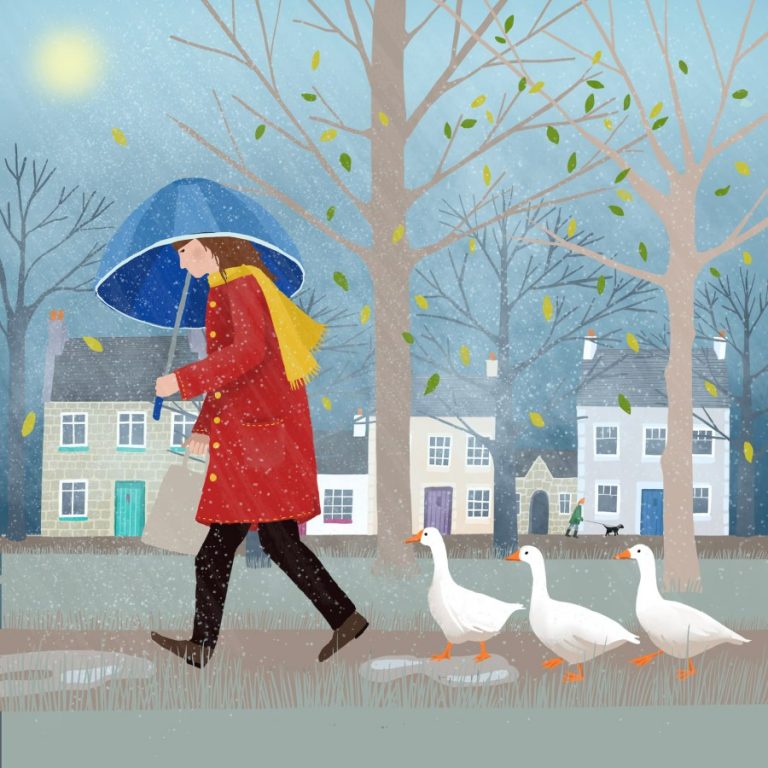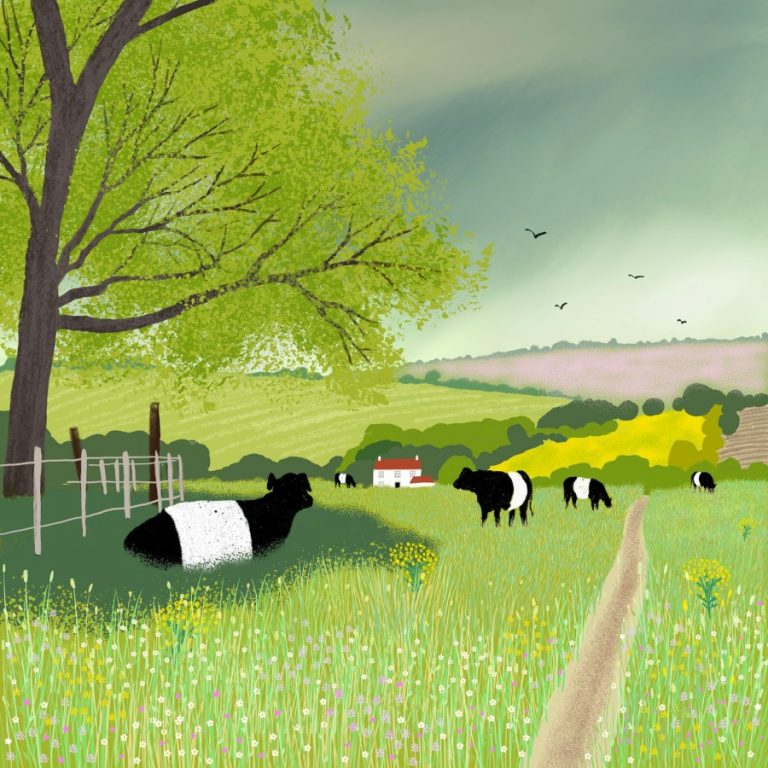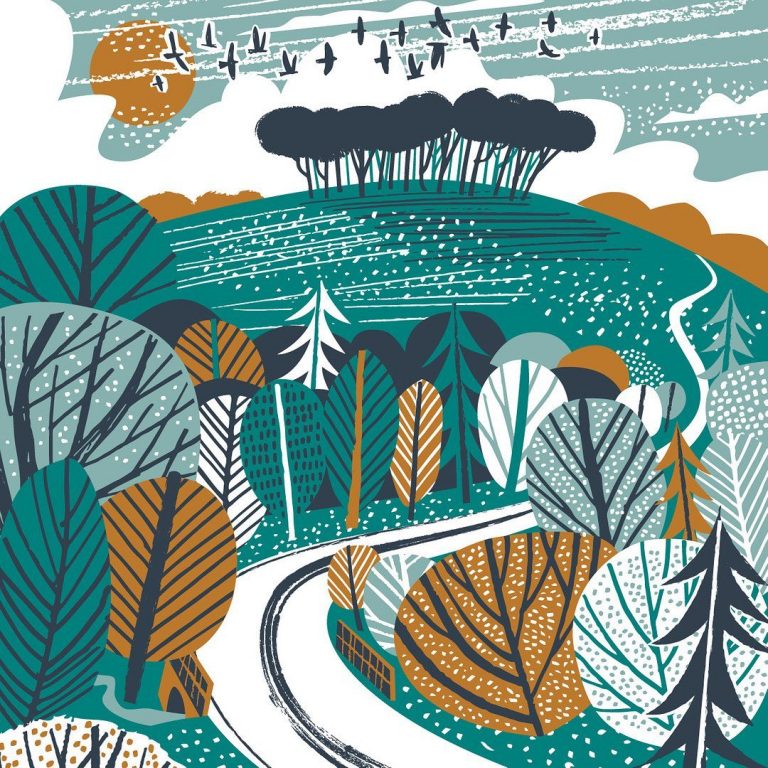
Durdle Door, Maria Burns
England’s scenery is rich, varied, and sometimes surprising. Rugged coastlines, pastoral hills, airy mountaintops, and soaring city landmarks each offer their own snapshot of natural beauty and history. In a single day, you can gaze at limestone arches set in turquoise bays, walk atop rolling ridges or see a city skyline.
This guide brings together some of England’s most breath-taking viewpoints, both well-known and off the beaten path. From the dramatic Jurassic Coast in Dorset to the high points of the Pennines, the gentle slopes of the Malvern Hills, and the grand dome of St Paul’s Cathedral in London, every place tells a story.
If walking in nature, always follow the Countryside Code, to keep all creatures safe. For coastal areas, check tide times and warning flags, and read our post on keeping dogs safe by the seaside.
Coastal and Seaside Spectacles
England’s shores have a raw force you can see and feel. Each viewpoint along the coast has its own drama and character, shaped by sea, sky, and human history.
Durdle Door
Durdle Door’s limestone arch rises from the sea near Lulworth, carved by waves over thousands of years. This spot is a highlight on the Jurassic Coast, a UNESCO World Heritage site famous for fossils and geological wonders.
Photographers flock here at sunrise when soft light washes the rocks and clear water below. Several walking trails connect Durdle Door to the nearby Lulworth Cove and offer sweeping scenes from atop the cliffs. It’s best to visit in early morning or late afternoon outside peak summer months for fewer crowds and richer colours.
White Cliffs of Dover
The White Cliffs stretch along Kent’s coast, gleaming almost impossibly bright against the blue of the Channel. On a clear dawn, the 350-foot chalk faces catch the first light and seem to glow. There are quiet moments too: at Langdon Cliffs, wildflowers and kestrels enchant in spring and summer. At the base, beaches and pebble coves give another angle for photos and birdwatching, with rare migratory species overhead.
Blackpool Tower
Blackpool Tower, built in 1894, brings a touch of Victorian ambition to Lancashire’s seaside. Rising to 518 feet, its structure is inspired by the Eiffel Tower but carries its own playful style.
Ascend to the observation deck for a 360-degree panorama that sweeps across the Irish Sea. On bright days, the view stretches to the Isle of Man to the west and the Lake District’s fells inland.
Inland Hills and Mountain Panoramas
England’s interior is woven with rolling hills, dramatic peaks, and old paths that lead to wide horizons. Each hill or summit tells its own story, shaped by thousands of years of nature and people.
Scafell Pike
Scafell Pike, England’s tallest mountain, rises to 978 metres in the Lake District. Its summit offers a patchwork of lakes, fells, and green valleys sprawling into the distance. On a clear day, your eyes can trace small villages, winding streams, and other high peaks all the way to Scotland.
There are several routes up. The most popular starts at Wasdale Head, winding over rocky slopes and scree. Weather changes quickly, with mist and rain turning familiar tracks into a maze, so good boots and maps are essential. Summer and early autumn give the best chance for clear views and gentler winds.
The Pennines
The Pennines form England’s natural backbone, running from Derbyshire to Northumberland. High ridges here stretch towards the Irish Sea on one side, and the North Yorkshire moors on the other. The wind whistles through open grasslands, shaping a landscape as rugged as any in Britain.
The Pennine Way, England’s classic long trail, links a string of high viewpoints. Kinder Scout, Cross Fell, and High Cup Nick each bring big, open skies and sweeping moorland. Choose a season that suits you: in spring, skylarks sing above the heather; in winter, snow turns the moors stark and silent.
Malvern Hills and Worcestershire Beacon
Rising sharply from the fields, the Malvern Hills offer long green slopes and stone-rimmed paths. The Worcestershire Beacon is the tallest peak, at 425 metres, topped with a toposcope that marks out sights in every direction.
In spring, wildflower meadows and ancient hill forts line the ridges. On clear days, the view ranges over Herefordshire, the Welsh borders, and the Cotswolds. Walking the ridge feels airy and timeless, with ancient rocks underfoot and patchwork fields below.
Broadway Tower
Broadway Tower sits on the edge of the Cotswold escarpment, looking out across 13 counties. Built as a folly in 1798, the tower has seen centuries of change and inspired writers such as William Morris.
Climb to the top for a vast panorama towards the Black Mountains in Wales or north across the Midlands. Surrounding grounds are full of red deer and rare wildflowers, making the site as lovely for a picnic as for a photo. On misty mornings, the tower seems to float above the landscape—a real-life castle in the clouds.
Pen Hill
Pen Hill stands on the Mendip ridge, gazing south over the Somerset Levels. The gentle slopes and open tops mean wide skies and roomy views. Look for Glastonbury Tor in the distance, rising like a storybook island from the flatlands.
Cyclists and walkers find it easy to reach Pen Hill via local trails, especially in late spring when birds sing from willow thickets. The horizon stretches as far as Exmoor on a clear day, while sunrise paints the land in soft gold.
Urban Vistas from Historic Heights
City viewpoints offer a change of pace, blending old stone with new glass and distant tree-lined parks. England’s cities have their own drama—none more so than London, where ancient streets and modern towers rise above the winding Thames.
St Paul’s Cathedral Dome
St Paul’s Cathedral stands at the heart of London. Its dome climbs to 365 feet, and from its highest point you can see the city unfolding all around—river, Parliament, the Shard, and green parks scattered through the maze.
The climb is steep with 365 steps that wind through galleries and hidden chambers. The Whispering Gallery surprises with its perfect acoustics, while the Golden Gallery gives the best rooftop view over the city. Early morning brings soft light and quieter crowds, while dusk sets the dome aglow against the London skyline.






